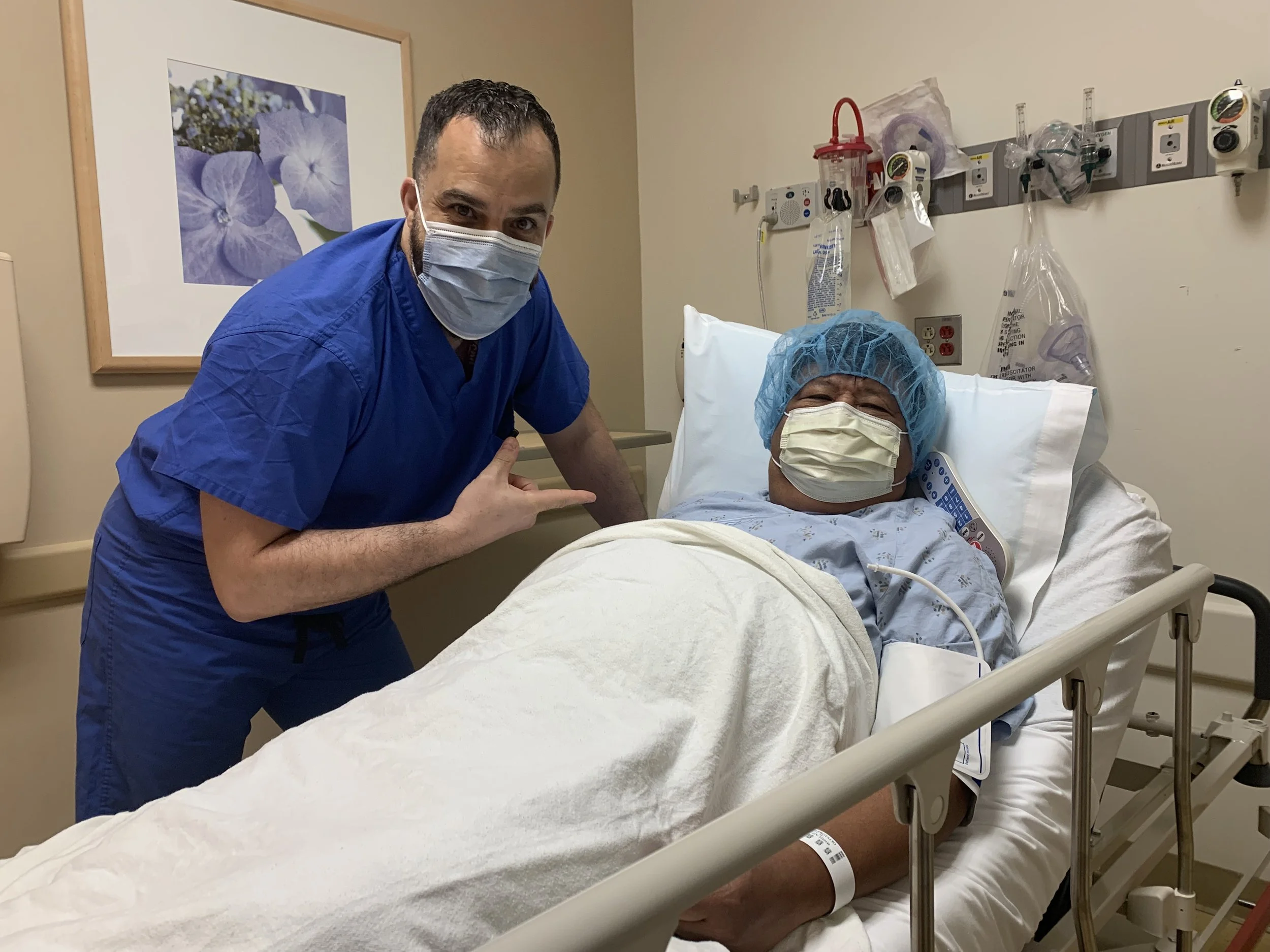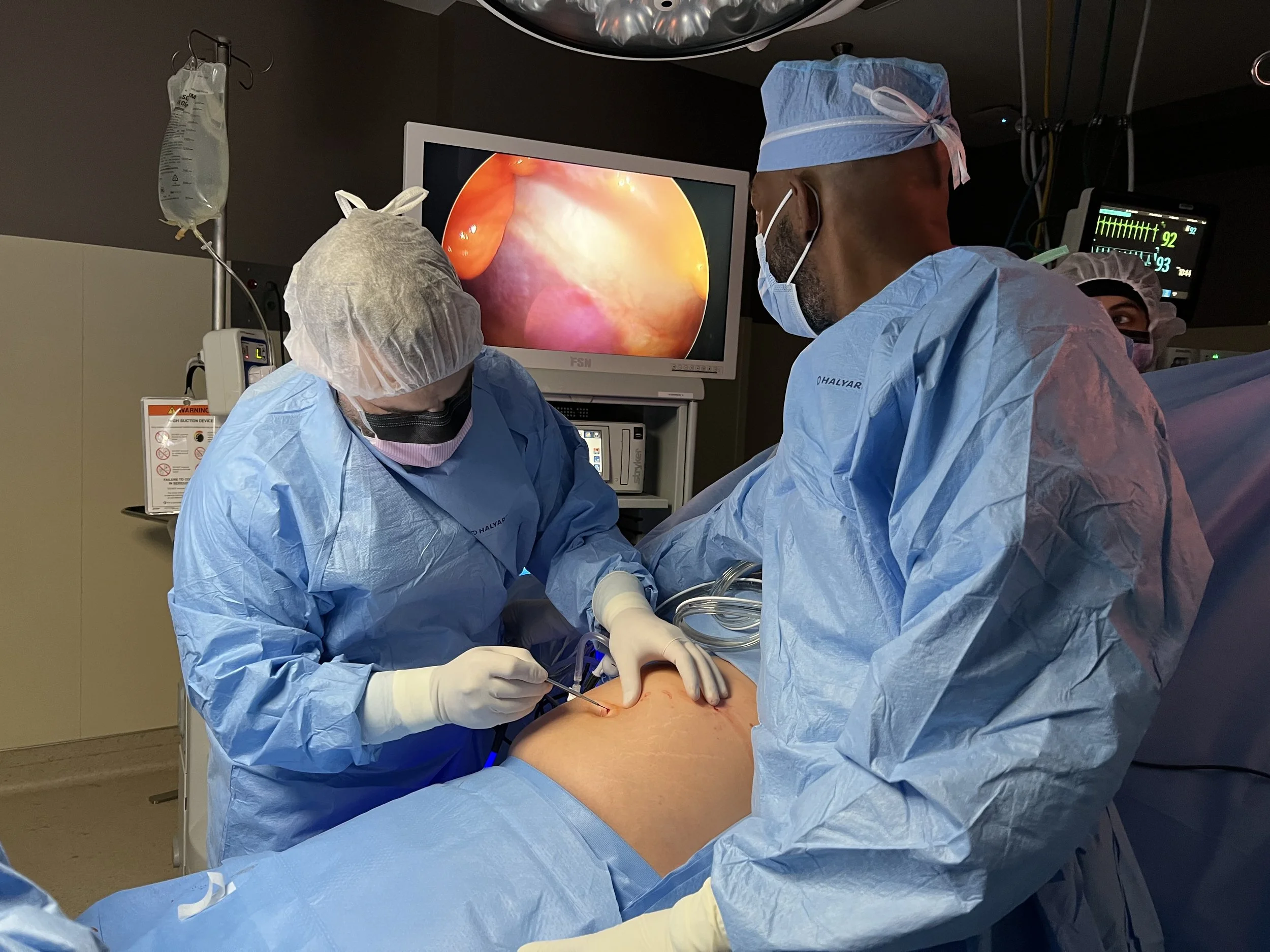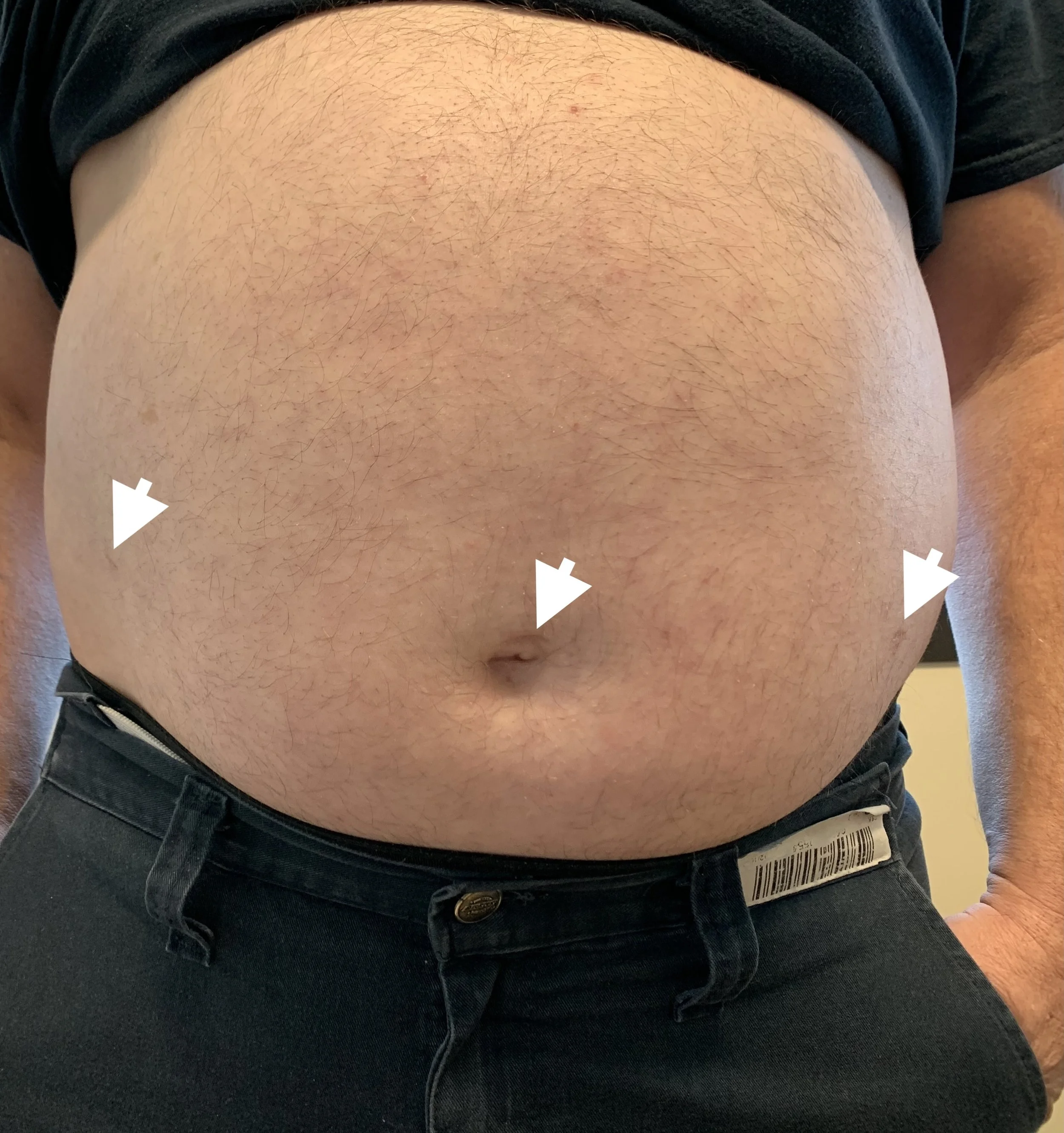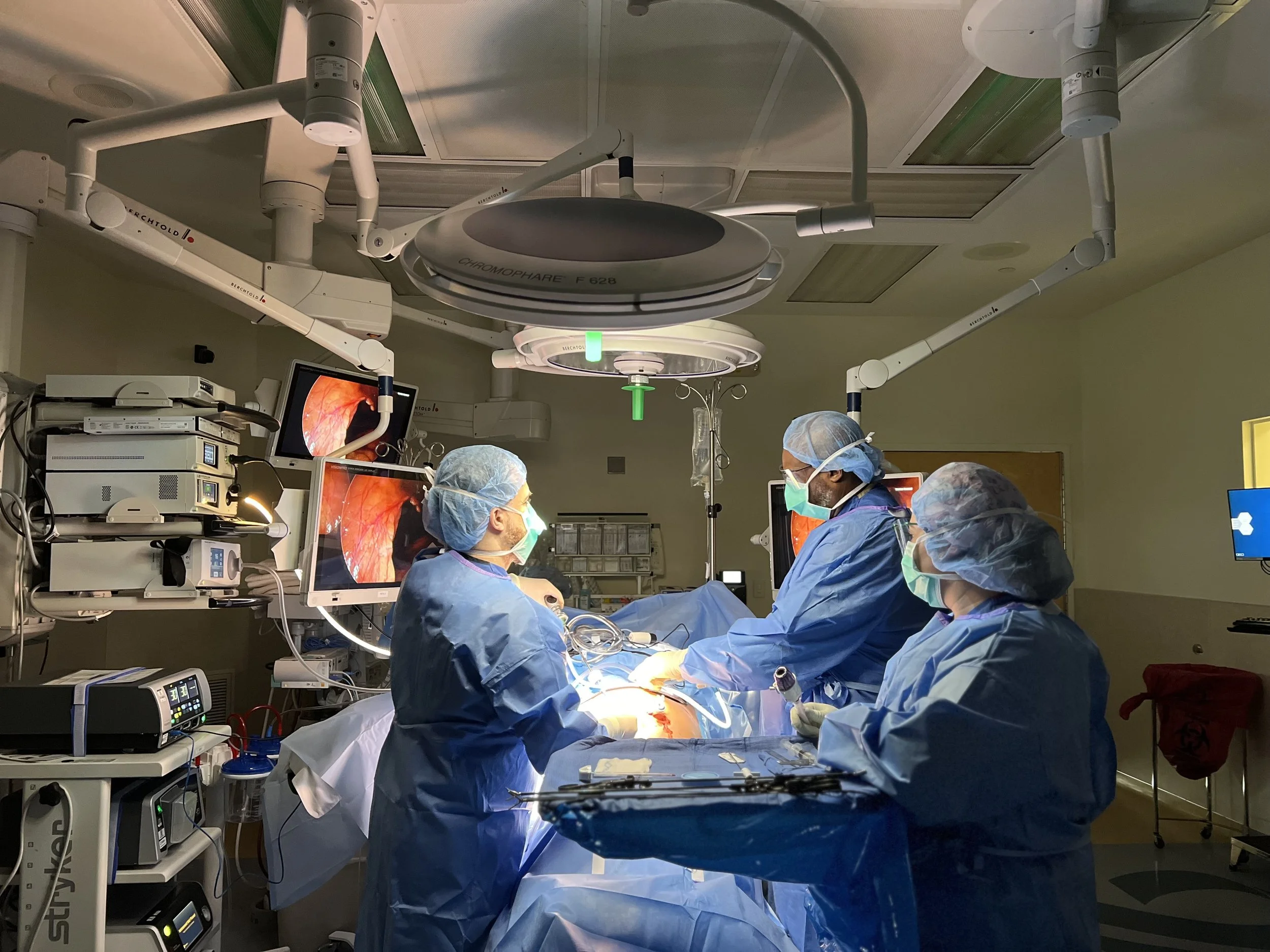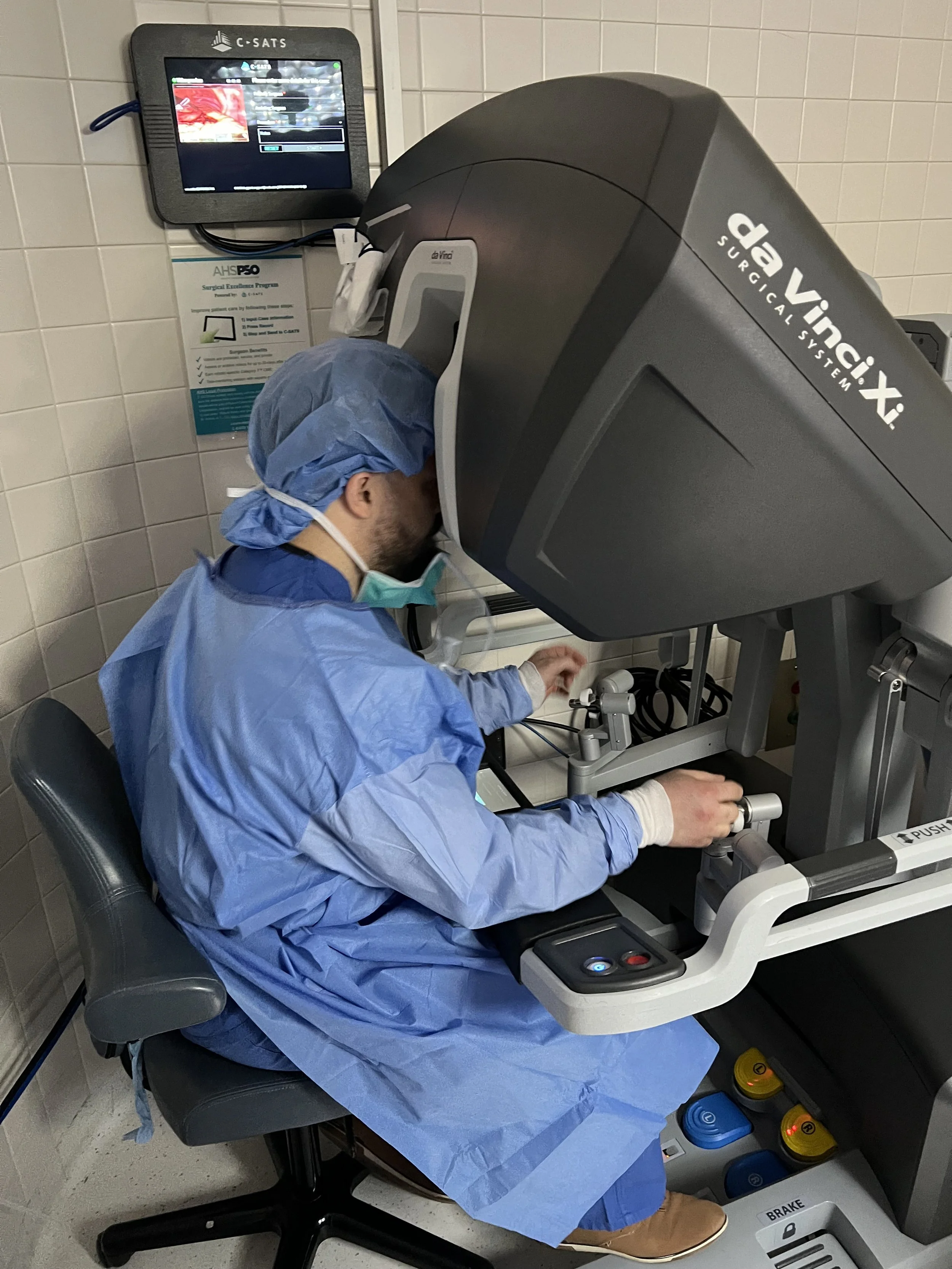Break Free from Groin Pain – Experience Life Without the Burden of Inguinal Hernia
Don’t Let a Nagging Groin Bulge Rob You of Your Comfort – Let Dr. El Djouzi Get You Back to Your Best
Why This Matters to You
If you’ve been putting up with that stubborn groin bulge, feeling that sharp, nagging pain every time you bend, lift, or even cough, and hoping it would just go away—only to watch it get worse—then keep reading. You’re about to uncover what could finally free you from this relentless discomfort.
Trust me, what comes next could be the most important thing you read today. Here’s why…
The No-Nonsense Truth About Groin Hernias
Why Ignoring a Groin Hernia Is a Risk You Can’t Afford to Take
You might feel that slight bulge or mild discomfort when lifting or bending and think, “It’ll pass.” But here’s the unvarnished truth: a groin hernia doesn’t just go away on its own. Left untreated, what starts as a manageable annoyance can become a serious, painful issue that disrupts your life. This isn’t an exaggeration—it’s a reality I’ve witnessed too often like the patient in the pictures.
The Global Picture
Inguinal hernias make up a staggering 80% of all hernia cases worldwide, affecting millions annually. Globally, about 20 million hernia repairs are performed each year, and 1 million of these occur in the U.S. alone. These numbers underline just how common this condition is and the urgent need for proper treatment.
The Numbers Speak for Themselves
Men between 40 and 80, this is for you. You are at the highest risk, with data showing that nearly 1 in 3 men in your age group will develop a groin hernia. And men are significantly more prone than women, with a male-to-female ratio ranging from 7:1 to 10:1. The lifetime risk? It’s around 27% for men, compared to just 3% for women.
Age Matters
Here’s something you need to know: Groin hernias can happen to anyone, at any age—even infants aren’t immune. But here’s the kicker: as you age, the risk skyrockets. For men, that risk takes a sharp turn upwards after 50 and hits its peak between 60 and 80, with 65 being the danger zone where natural tissue weakening leaves you wide open to hernias.
Now, listen up—early treatment isn’t just a good idea; it’s essential. It’s the key to cutting down complications, easing pain, and making recovery a breeze. So, why roll the dice with your health when the solution is right in front of you? Take action now, and you’ll be back to living life on your terms—faster and with peace of mind.
Why My Approach Stands Out..
Robotic and Laparoscopic Precision
I use state-of-the-art robotic and laparoscopic (keyhole) surgery. These aren’t just buzzwords; they mean three tiny incisions that heal in under a week, leaving scars so faint they’re almost invisible.
Speedy Procedures
My surgeries typically take an hour or less. Get in, get treated, and get back to your life.
Same-Day Freedom
Most of my patients go home on the same day. Overnight stays? Rarely needed. You’re back home before dinner, resting in the comfort of your own space.
What People Say About Us
Spot the Warning Signs – Don’t Wait Until It’s Too Late
What to Watch For
A noticeable bulge or swelling in your groin.
Pain or discomfort when lifting, bending, or even coughing.
When to Act
If any of these sound familiar, you need to act. The earlier you consult me, the simpler the treatment and recovery.
Your Surgery Journey – What to Expect
Here’s How It Works
Your First Consultation
A personalized one-on-one discussion to understand your situation and map out your best path forward.
Prep Like a Pro
I’ll walk you through exactly how to prepare, ensuring you’re confident and ready for the procedure.
Robotic and Laparoscopic Surgery
Minimal incisions, minimal pain, minimal downtime. This isn’t old-school surgery; it’s modern, precise, and tailored for your comfort.
Recovery Simplified
Here’s what you’ll love: most patients only need 1-2 days of mild pain medication and are back to their regular routines, including driving and light activities, within days. By two weeks, you’re cleared for strenuous activities.
I’m with You Every Step of the Way
From your first appointment to your last follow-up, I’m here to make sure you recover smoothly and confidently.
The Advantages You Won’t Find Everywhere Else
Invisible Scars, Real Results
My robotic and laparoscopic techniques mean tiny, barely-there scars that heal fast.
Swift Recovery Times
You’re back at work, driving, and living your life within days. Full physical activities? Two weeks.
Home the Same Day
No lingering in a hospital bed. Get treated and sleep in your own bed that very night.
Extremely Low Recurrence
With my precision methods, the chances of your hernia coming back are practically nil.
Ready to Change Your Life? Here’s How
Act Now!
Don’t let a groin hernia control you. Click “Schedule Your Consultation” to start your journey to living pain-free.
Quick Online Process
It takes only 15 minutes to fill out your online intake form and pick your preferred date for the consultation.
FAQs You’ve Been Wondering About
1. What are the first signs that you might have an inguinal hernia?
The earliest signals of an inguinal hernia can be subtle, but once you know what to look for, they become unmistakable. It often starts with a slight bulge in the groin area, which seems to magically appear when you stand up, lift something heavy, or even just cough. That little lump might be painless at first, a silent hitchhiker that only becomes noticeable when you're exerting yourself. But here's the kicker: it might bring with it an aching, burning sensation that says, "Hey, I'm here, and I’m not leaving without attention." Don't ignore these cues; they're your body's way of whispering that something deeper is happening.
2. Is it possible for a groin hernia to go away without surgery?
Let's be clear! a hernia isn’t the type of guest that politely packs up and leaves on its own. No, these unwelcome visitors only get more persistent over time. Without surgical intervention, they grow larger and more problematic, sometimes leading to severe complications like incarceration or strangulation—where the blood flow to the trapped tissue is cut off, risking tissue death. Surgery isn’t just an option; it’s the golden ticket to reclaim your comfort and safety.
3. Who is more likely to develop an inguinal hernia, and why?
Some of us are just more predisposed to this kind of trouble. Men top the list—eight times more likely than women, in fact. Why? It’s partly down to their anatomy and the naturally weaker spots in the groin area. Aging adds fuel to the fire as muscles lose their youthful elasticity. Other risk factors? Think long standing straining from constipation or heavy lifting, and even the pressures of pregnancy in women. Your family history also plays a part, hinting that if a relative had it, you might, too
4. What surgical methods exist to repair an inguinal hernia, and how do they differ?
Surgical repair of an inguinal hernia is where modern medicine flexes its muscles. There's open surgery, where the surgeon makes a larger incision to manually push the tissue back and patch up the muscle wall. Then there’s the slick, minimally invasive approach—laparoscopic surgery, which uses small cuts and a camera for a faster recovery with less pain. The most cutting-edge option? Robotic-assisted surgery, combining precision with the same minimally invasive benefits. Your surgeon will help you decide which is your best bet based on your specific needs
3. Who is more likely to develop an inguinal hernia, and why?
Some of us are just more predisposed to this kind of trouble. Men top the list—eight times more likely than women, in fact. Why? It’s partly down to their anatomy and the naturally weaker spots in the groin area. Aging adds fuel to the fire as muscles lose their youthful elasticity. Other risk factors? Think long standing straining from constipation or heavy lifting, and even the pressures of pregnancy in women. Your family history also plays a part, hinting that if a relative had it, you might, too
4. What surgical methods exist to repair an inguinal hernia, and how do they differ?
Surgical repair of an inguinal hernia is where modern medicine flexes its muscles. There's open surgery, where the surgeon makes a larger incision to manually push the tissue back and patch up the muscle wall. Then there’s the slick, minimally invasive approach—laparoscopic surgery, which uses small cuts and a camera for a faster recovery with less pain. The most cutting-edge option? Robotic-assisted surgery, combining precision with the same minimally invasive benefits. Your surgeon will help you decide which is your best bet based on your specific needs
5. What happens if an inguinal hernia is left untreated?
Picture a ticking time bomb in your abdomen. That's what an untreated hernia can become. Over time, that minor bulge can evolve into an incarcerated hernia, where tissue becomes trapped and blood flow is compromised. Worse still, it could progress to a strangulated hernia, an emergency where tissue death is imminent without immediate surgery. This scenario brings pain, potential intestinal damage, and severe health risks. Ignoring a hernia is never wise; it's not just about discomfort—it’s about preventing a major health crisis.
6. What does recovery from inguinal hernia surgery look like?
Post-surgery, your body begins the healing marathon. The first week will test your patience with tenderness and a need to baby that incision area. Avoid heavy lifting like the plague, and support your abdomen when you sneeze or cough. Most patients return to light activities within 1-2 weeks, but it’s crucial to listen to your body. Push too hard, too soon, and you might just land yourself back under the surgeon's knife. Patience isn’t just a virtue; it’s a necessity for complete recovery.
7. Can small hernias be managed without surgery?
While surgery is the definitive solution, there are moments when the waiting game is an option—particularly with tiny, symptom-free hernias. Think supportive garments like trusses that provide temporary relief by cradling the bulge. But make no mistake: this isn’t a permanent fix, just a stopgap until surgery becomes necessary. Monitoring the hernia’s behavior with a watchful eye is key.
8. What lifestyle tweaks can help manage a hernia or prevent it from worsening?
Consider lifestyle changes as preventive armor. Maintaining a healthy weight can reduce pressure on your abdominal wall, while good lifting techniques (hint: bend at the knees, not the waist) protect your core. Gentle exercises that strengthen your core muscles also help. But always consult a healthcare provider before starting new routines; you want reinforcement, not more strain.
9. Is mesh always used in hernia surgeries, and what are the pros and cons?
Mesh isn’t a one-size-fits-all solution, but it’s often the hero of the story, especially in larger hernias where simple sutures may fail. Mesh reduces the chances of recurrence by covering the muscle defect like a protective shield. However, it’s not always suitable, particularly for those with a history of implant rejection. A more in-depth discussion on the topic will take place at the time of your consultation.
10. How long should I expect post-surgery swelling to last?
Swelling is your body’s natural response to healing—it’s part of the deal. Typically, bruising (although very minimal if at all) and swelling subside within 1-2 weeks. Still, your body might throw in a curveball, especially if your activity level is high or healing takes a detour. The mantra? Rest, patience, and gentle support until the body regains its balance.
Finding Me is Easy
Clinic Location
2821 83rd Street, Darien, IL 60561
Contact Details
Tel: 773 365 1300
Email: info@premierbariatricinstitute.com
Meet Dr. El Djouzi - Your Expert in Advanced Hernia Surgery
Credentials? You can find those with a quick search. What you need to know is why I’m the surgeon you want for advanced hernia care.
13+ Years of Surgical Mastery
For over 15 years, I’ve specialized in advanced, minimally invasive surgeries, with deep expertise in groin hernia repairs. Whether it's laparoscopic or robotic-assisted techniques, my focus is on precision, faster recovery, and better outcomes. The results speak for themselves:
Thousands of successful minimally invasive procedures
Extensive experience in complex groin hernia cases
Countless patients returning to pain-free, active lives
Why I’m Different
Every patient I meet has a unique story—and I treat each one as such. Your hernia isn’t just a condition; it’s affecting your life. That’s why I’ve made it my mission to listen and tailor solutions that go beyond standard care.
What You Can Expect
Expert Guidance
Transparent, no-nonsense advice on what surgical options suit your case best.
Custom Treatment
Every plan is personalized, aligning with your health, lifestyle, and goals.
End-to-End Support
I’m with you from your first consultation to full recovery, ensuring your questions are answered and your progress monitored.
Take the First Step
I’ll be straight with you—I take on patients ready for real change and optimal results. If that’s you, don’t wait.
Click the bleu button to book for your consultation. Come prepared to discuss your goals and concerns. This could be the start of a life-changing journey.
You’ve made it this far, which means you’re ready for a change. Don’t let fear or hesitation hold you back—you are worth it. Every day you wait is another day dealing with discomfort and limitations. Your health is too important to delay. This is your time, your opportunity to reclaim your well-being.
Act now and step into the future you deserve. Slots for consultations are limited, and this chance won’t be available forever. Don’t let another day slip by—take the first step toward relief today.
Copyright © 2023-2024 Premier Bariatric Institute LLC. All rights reserved.









